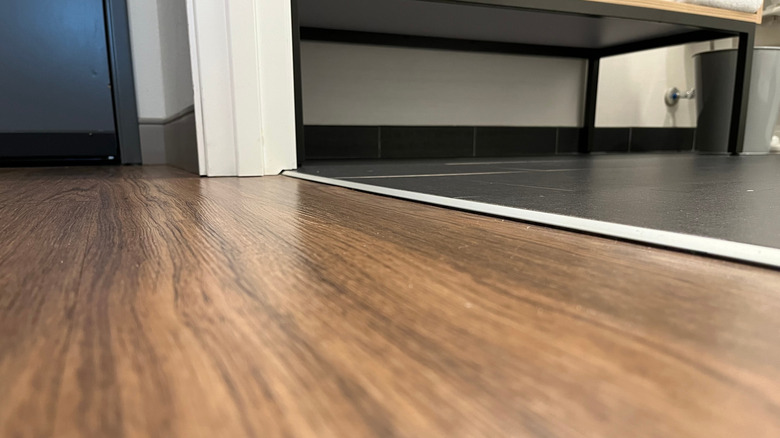The Key To Installing Transition Strips On Tile, Wood, And Other Flooring Types
Installing new floors is exciting. You have carefully picked out the best flooring for your home, deliberated over colors, and decided whether to DIY it or hire a professional to install your floor. What you may not have thought about is how to transition between one flooring type and another. The key to eliminating trip hazards is a transition strip. When you have two flooring types of varying heights, you will likely need a transition (or reducer) strip to create a gentle slope between the floors.
This is an easy job to DIY. Start by measuring the height difference between the floors. For example, if you have one floor that is about 1 inch high, and another that is 1/4 inch high, you will need a transition strip that can cover a 3/4 inch height difference. With this measurement in hand, you can go to the store to find the right material for your installation. This will depend on the flooring materials you are working with. For instance, if you are going from wood to carpet, you will likely want a wood transition. You will also need to measure the depth of the transition strip to ensure it can cover the disparity in your flooring heights. Err on the side of a taller transition strip, because you can always cut it down if needed.
How to install a transition strip
You may want to have a few transition options ready in case one style ultimately makes more sense than the others. However, once you have the right product, it's time to get to work. Next, you will want to measure the length of the area you need to transition and cut the strip to length. Some strips will have built-in double-sided tape along one of the longer edges. If yours does not, have construction adhesive ready to hold your transition in place. Do not glue both edges down — only apply the glue to one of the long sides. If you have one flooring that is meant to move around more, glue your transition strip to the more stable surface and leave the other side free. This is important so the floor has room for expansion and contraction over time. If there is a door present, ensure it closes smoothly before fixing the product in place. If the door closes easily, go ahead and affix your strip. If your door is not closing, you may need to dig deeper to understand the problem and figure out how to fix it.
Keep in mind that there are other ways to join different flooring materials. If you're lucky enough to be choosing your floors, consider something more aesthetically pleasing and creative than transition strips like a decorative tile or wood border. These might be more difficult to DIY, but they can add a lovely dose of personalization to your space.
